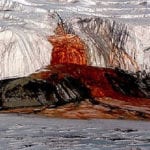 Humans
Humans  Humans
Humans  Movies and TV
Movies and TV 10 Holiday Movies Released at Odd Times of the Year
 Politics
Politics 10 Countries Where Religion and Politics Are Inseparable
 Weird Stuff
Weird Stuff 10 Freaky Times When Famous Body Parts Were Stolen
 Miscellaneous
Miscellaneous 10 Interesting Things Manufacturers Stopped Making and Why
 Gaming
Gaming 10 Funny Tutorials in Games
 History
History 10 Fascinating Little-Known Events in Mexican History
 Facts
Facts 10 Things You May Not Know about the Statue of Liberty
 Movies and TV
Movies and TV 10 Movie Adaptions That Brought Popular Songs to Life
 Health
Health 10 Miraculous Advances Toward Curing Incurable Diseases
 Humans
Humans 10 One-of-a-kind People the World Said Goodbye to in July 2024
 Movies and TV
Movies and TV 10 Holiday Movies Released at Odd Times of the Year
 Politics
Politics 10 Countries Where Religion and Politics Are Inseparable
Who's Behind Listverse?

Jamie Frater
Head Editor
Jamie founded Listverse due to an insatiable desire to share fascinating, obscure, and bizarre facts. He has been a guest speaker on numerous national radio and television stations and is a five time published author.
More About Us Weird Stuff
Weird Stuff 10 Freaky Times When Famous Body Parts Were Stolen
 Miscellaneous
Miscellaneous 10 Interesting Things Manufacturers Stopped Making and Why
 Gaming
Gaming 10 Funny Tutorials in Games
 History
History 10 Fascinating Little-Known Events in Mexican History
 Facts
Facts 10 Things You May Not Know about the Statue of Liberty
 Movies and TV
Movies and TV 10 Movie Adaptions That Brought Popular Songs to Life
 Health
Health 10 Miraculous Advances Toward Curing Incurable Diseases
10 Perplexing Mysteries That Were Only Recently Solved
The story of humanity is the story of our quest to understand the world around us. We’ve talked before about the many, many mysteries that continue to defy explanation. But that’s only half the story. Scientists and historians continue to work to answer unresolved questions about the universe and our own past. And recently, it seems like they’ve had some notable successes.
10The Lost Franklin Expedition Ship
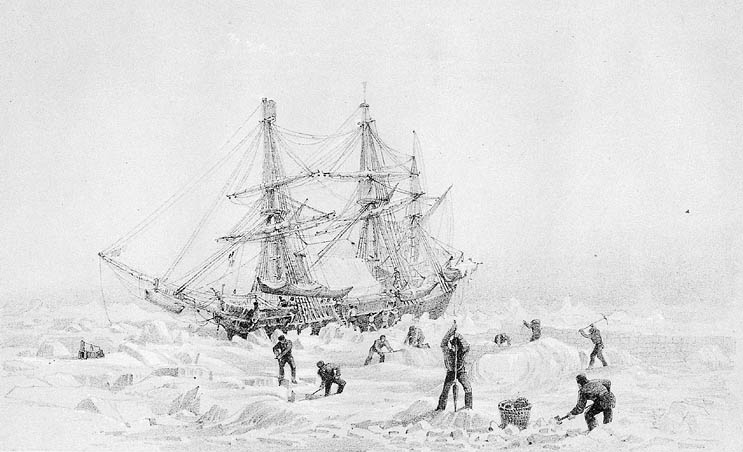
In 1845, British explorer Sir John Franklin set off into the Canadian Arctic in search of the fabled Northwest Passage. The voyage, which attracted huge media attention, was well-funded and heavily equipped. Yet after entering the Arctic, the expedition was never heard from again. Two ships and 129 men simply vanished into the uncharted northern waters.
Over the years, a few clues have hinted at the expedition’s terrifying fate. An 1859 rescue mission found two notes under a rock cairn on King William Island. The upbeat first note reported that the ships had become trapped in the ice and the crew had decided to winter on the island. The second note, scrawled in the margins of the first, revealed that the ships had been trapped for over a year and the crew had experienced a mysteriously high mortality rate. Franklin was dead and the survivors intended to walk south to safety. They didn’t make it. Inuit hunters reported finding bones marked by metal saws. “The white men had been eating each other.”
The area fully came under Canadian control in 1880, by which time London, disheartened by the lack of wreckage found, no longer had any intention of proceeding with search operations. Several Canadian attempts were made to find the missing ships, but all were unsuccessful. Until now that is. In September 2014, Prime Minister Stephen Harper announced that one of the ships had been discovered. The wreck, found by an underwater vehicle belonging to Parks Canada, likely holds vital clues about the exact fate of the expedition—and the mysteriously high death rate that claimed Franklin and many of his crew. The hunt is now on for the other ship and there is little doubt that it will be found soon.
9Egypt’s Strangely Small War Elephants

In 217 B.C., Pharaoh Ptolemy IV of Egypt declared war against the Seleucid ruler Antiochus III. The two armies met at the Battle of Raphia, in what is now Gaza, in July of that year. Both sides deployed a fearsome weapon—war elephants. In a vivid account of the clash, the Greek historian Polybius described how the elephants fought by locking tusks and attempting to gore each other. According to Polybius, only a few of Ptolemy’s pachyderms actually entered the battle, with most panicking at the sight of Antiochus’s larger Indian elephants.
This last detail left many historians scratching their heads, since African elephants are actually much larger than their Asian counterparts. All sorts of explanations were offered, including the widely accepted idea that Ptolemy, unable to obtain large savanna elephants, had been forced to use smaller African forest elephants instead. But new research in Eritrea, the source of Egypt’s elephants, has succeeded in solving the mystery—Polybius just got it wrong.
Eritrean elephants are almost extinct today. However, a new study of the tiny remaining population has revealed that they are savanna elephants—and would certainly have been larger than their Indian counterparts. Polybius, who wasn’t at the battle, had likely heard myths about the gigantic wildlife in India and assumed that was the reason Antiochus’s elephants scared off their African counterparts. In reality, African elephants, though large, are notoriously skittish and hard to control. It turned out not to matter much—Ptolemy won the battle anyway.
8The Dark Side Of The Moon

In 1959, the Soviet spacecraft Luna 3 took the first pictures of the mysterious dark side of the Moon. To widespread surprise, the previously unseen lunar surface contained almost none of the large dark areas, known as lunar maria or “seas,” that dominate the familiar side of the Moon. In fact, maria make up only around 2 percent of the dark side of the Moon. And a mystery was born.
Maria are actually large basaltic plains formed by volcanic activity. A consensus eventually formed that a thicker crust prevented maria from forming on the dark side. But that didn’t really solve the central mystery—why was the dark side of the Moon different from the side that faces us? Why was the crust so thick there? The question remained unanswered for over 50 years, but astrophysicist Jason Wright now claims to have cracked the case.
There is an existing theory that the Moon was formed from the debris scattered when a Mars-sized object collided with the Earth. The collision would also have created an enormous amount of heat. Since it’s much smaller than the Earth, the Moon would have been faster to cool off—but the side of the Moon facing Earth would have been warmed by the heat radiating out from the molten planet. The faster cooling process on the Moon’s far side created the thick crust that kept lava from reaching the surface. Astronomers usually dislike the term “dark side of the Moon” since both sides receive the same amount of light from the Sun—but it seems as though the far side genuinely was once darker, thanks to being shielded from the smoldering Earth.
7The Mysterious Notes In A Copy Of Homer’s ‘Odyssey’

For over 150 years, a series of mysterious notes in an ancient copy of Homer’s “Odyssey” left scholars baffled. The handwritten annotations, written in a seemingly unknown language, were scrawled all over the margins of the 500-year-old manuscript. Although historians were pretty sure the notes had been made in the mid-19th century, nothing else was known—until the Internet got involved. After collector M.C. Lang offered a $1,000 reward for anyone who could decode the text, amateur cryptographers from around the world rushed to crack the case.
The prize was won earlier this year by Italians Daniele Metilli and Giula Accetta, who revealed the notes were made in an obscure form of shorthand invented by Jean Coulon de Thevenot in the 18th century. The decoded text was in French and appeared to be an amateur translation of the Greek text of the “Odyssey.”
The discovery required an impressive amount of work. Metilli and Accetta researched many defunct stenographic systems until they found one resembling the annotations. According to Metilli, “If I didn’t have access to online sources such as Google Books, the Greek Word Study Tool of the Perseus Digital Library and the French corpora of the CNRTL, I probably wouldn’t have won. What great times we live in!”
6The Ocean Quack
Fifty years ago, submarines detected a strange sound echoing through the Southern Ocean. Those who heard it thought it sounded like a duck quacking. Naturally this was impossible, since ducks seldom venture into the middle of the sea.
Over the years, many other reports surfaced of the strange quacking sounds, puzzling experts. Some speculated that the noise was caused by ships; others suspected shoals of fish. The only firm information was that the sounds were only reported in the Southern Ocean during winter and spring.
But earlier this year, researchers finally discovered that the sound comes from Antarctic minke whales. The lead researcher, Denise Risch, obtained conclusive evidence by attaching acoustic recorders to a pair of minke whales, resulting in a close-up recording of the elusive “quack.”
The discovery will help us study the whales—by monitoring the “quack,” scientists could be able to pinpoint their migration times and patterns. These studies will be facilitated by a permanent acoustic recording station recently set up in Antarctica.
5The Last Resting Place Of U-26
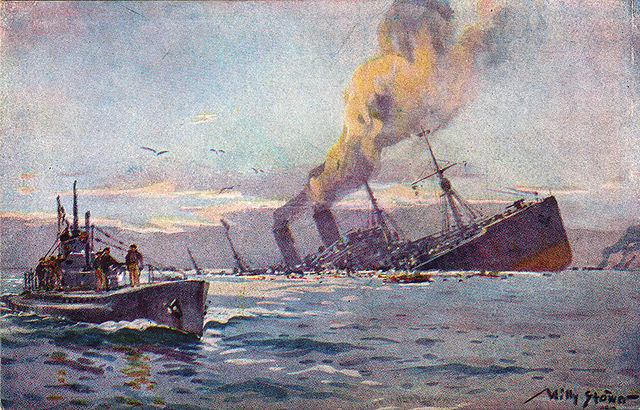
In 1914, shortly after the outbreak of World War I, Lieutenant Commander Egewolf von Berckheim was appointed to captain the newly built German submarine U-26. Von Berckheim would prove a skillful and effective captain, sinking four enemy ships, including the Russian armored cruiser Pallada.
A year later, in August 1915, the submarine disappeared somewhere in the Baltic Sea, along with all 30 of its crew. Over the years, various theories emerged regarding the sub’s fate, some claiming that U-26 was destroyed by a mine, others speculating that something must have gone wrong with the engine. Although experts believed it had gone down off the coast of Latvia, no trace of the wreck could be found.
But in early 2014, the remains of U-26 were finally discovered in the western Gulf of Finland. During the war, the Russians had heavily mined the area to block German access. It is thought that this minefield spelled the end of U-26.
In a fitting turn of events, U-26 was discovered in the same waters that house the remains of the Pallada. In yet another coincidence, the wreck was first spotted almost exactly 100 years after the sub was first commissioned, back in 1914.
4Chile’s Ancient Whale Graveyard
Four years ago, the expansion of the Pan-American Highway led to the discovery of a massive “whale graveyard” in Chile’s Atacama Desert. Huge fossils lay buried in layers of rock, mystifying palaeontologists as to why so many animals—as many as 40 species—had met their doom in the same place. The roadworks were temporarily halted to allow for further investigation.
Luckily, experts in 3-D imaging from the Smithsonian quickly came up with an answer. Their investigation revealed that the marine mammals had died at four different times over a period of at least 20,000 years, before being washed out to the tidal flat and covered by layers of sand. Scientists now believe that the whales were likely killed by toxic algal blooms, which still occur in Chilean waters. Iron washed down from the Andes enters the ocean, causing toxic algae to rapidly multiply, with devastating effects on local marine life. Sediment samples of the fossil site in Chile contained small apatite grains—likely remnants of the deadly algae.
3The Lost Anson

In October 1942, a training exercise went horribly wrong when four airmen vanished on board an Avro Anson plane after taking off from an airfield in Patricia Bay, British Columbia. Naturally, the Canadian military carried out extensive searches, but no trace of the plane could be found. For 71 years, the mystery endured—just where did the lost Anson crash?
The question would remain unanswered until 2013, when workers from a logging company stumbled onto the remains of the plane and its passengers while working on Vancouver Island. Due to unfavorable conditions at the time, the remains were only retrieved and identified in May of this year.
The remains found in the wreckage have now been confirmed as William Baird of the Royal Canadian Air Force and Charles Fox, Anthony William Lawrence, and Robert Ernest Luckock of the British Royal Air Force. Their remains will now be buried at a Commonwealth war cemetery.
2The Identity Of The Bosham Head
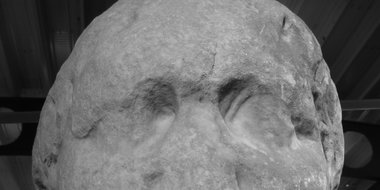
Two hundred years ago, a strange stone head, weighing a gargantuan 170 kg (375 lb), was discovered in a flowerbed in Chichester, England. Its origin remained a mystery until October 2013, when archaeologists used laser scanning technology to identify it as belonging to a statue of the Roman Emperor Trajan. The “Bosham Head” dates back to A.D. 122 and is one of the most significant relics found from Roman Britain.
Previously, identifying the head’s origin had been thought impossible, considering its extremely weathered condition (it may have spent some time at the bottom of the sea). However, modern laser technology allowed scientists to identify facial features and even a hairstyle, all of which pointed to Trajan.
Historians now believe the statue was set up to greet visitors as they entered Chichester’s harbor—the gateway to England. A similar work was on display at Ostia Harbor in Rome. The titanic statue would have proudly asserted Rome’s dominance over the area.
1The Location Of The Santa Maria
In 1984, underwater archaeologist Barry Clifford made history when he discovered the treasure-laden wreck of the Whydah—the only fully confirmed pirate shipwreck ever found. But earlier this year, Clifford claimed to have made an even more dramatic discovery—the shipwrecked remains of the Santa Maria. Columbus’s flagship famously ran aground on Christmas Eve 1492, leaving the explorer to limp back to Europe in the Nina.
Eleven years before Clifford’s breakthrough, ongoing research in northern Haiti pinpointed the possible location of a fort built by Columbus after the Santa Maria’s wreck. Clifford was able to compare the fort’s location with Columbus’s diaries to pinpoint the likely site of the wreck. To his surprise, Clifford found that he had already discovered it—his team had photographed the wreck years before without realizing what it was. Dives undertaken earlier this year confirmed the ship was the same size as the Santa Maria and even found a cannon consistent with the guns reportedly carried by Columbus. It now appears almost certain that the wreck is indeed the Santa Maria—one of the most amazing archeological finds in recent history.
+Thor’s Hammer
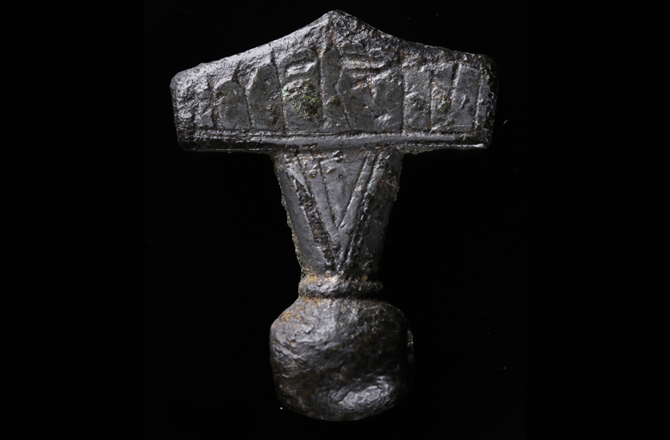
Dating to the first millennium A.D., over 1,000 T-shaped pendants have been discovered across Northern Europe. Named the Mjollnir amulets, they were initially assumed to represent Thor’s hammer. But this could never be confirmed, and their odd shape led to speculation that they had been completely misidentified. Now Danish archaeologists have found the answer—they are Thor’s hammer after all.
Earlier this year, the archaeologists uncovered a 10th-century Mjollnir amulet in Kobelev. The bronze pendant bore the inscription “Hmar x is.” When translated, the conveniently straightforward text reads: “This is a hammer.”
The only pendant found with such an inscription, it clearly connects the amulets with the legend of Thor. The god of thunder in Norse mythology, Thor used his mighty hammer to protect Asgard from hostile giants. Believers probably wore the hammer pendants for protection or as tokens of their belief, much in the same way Christians might wear the crucifix today. In fact, as Christianity gained popularity in Scandinavia, some Vikings apparently began wearing both the hammer and the cross for double protection.
Estelle lives in Gauteng, South Africa. She loves mysteries of all kinds.







